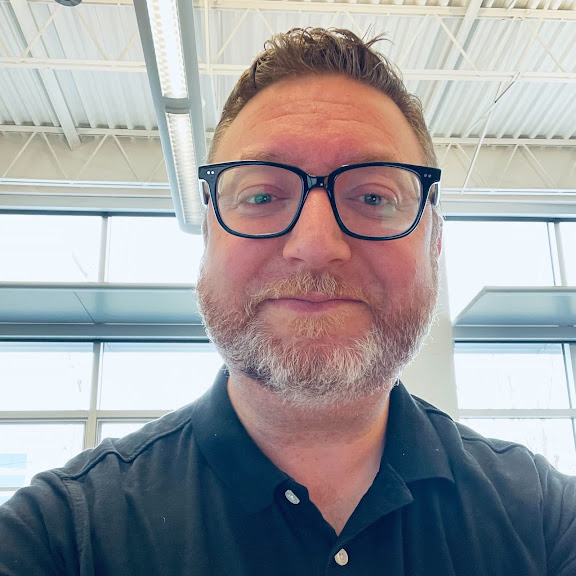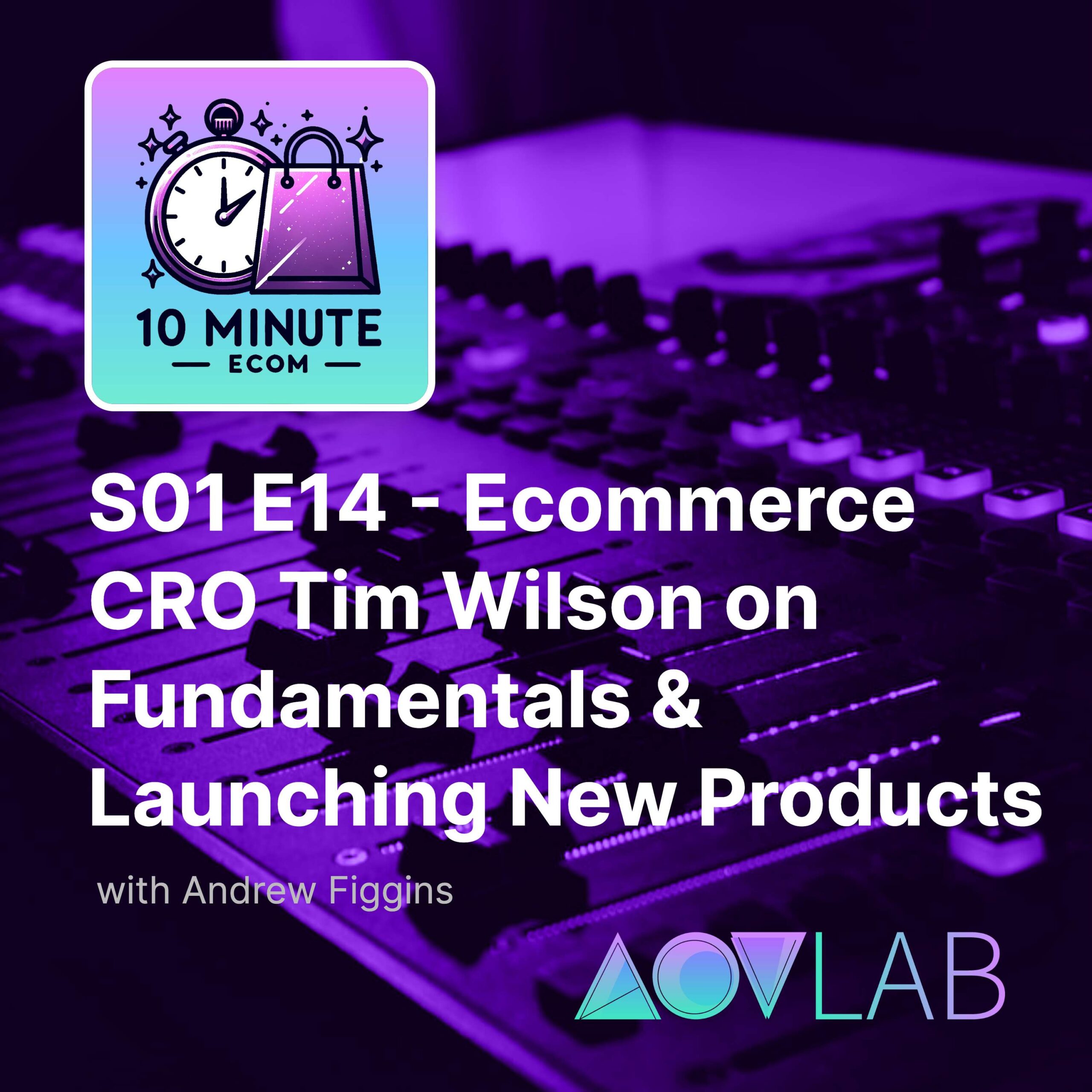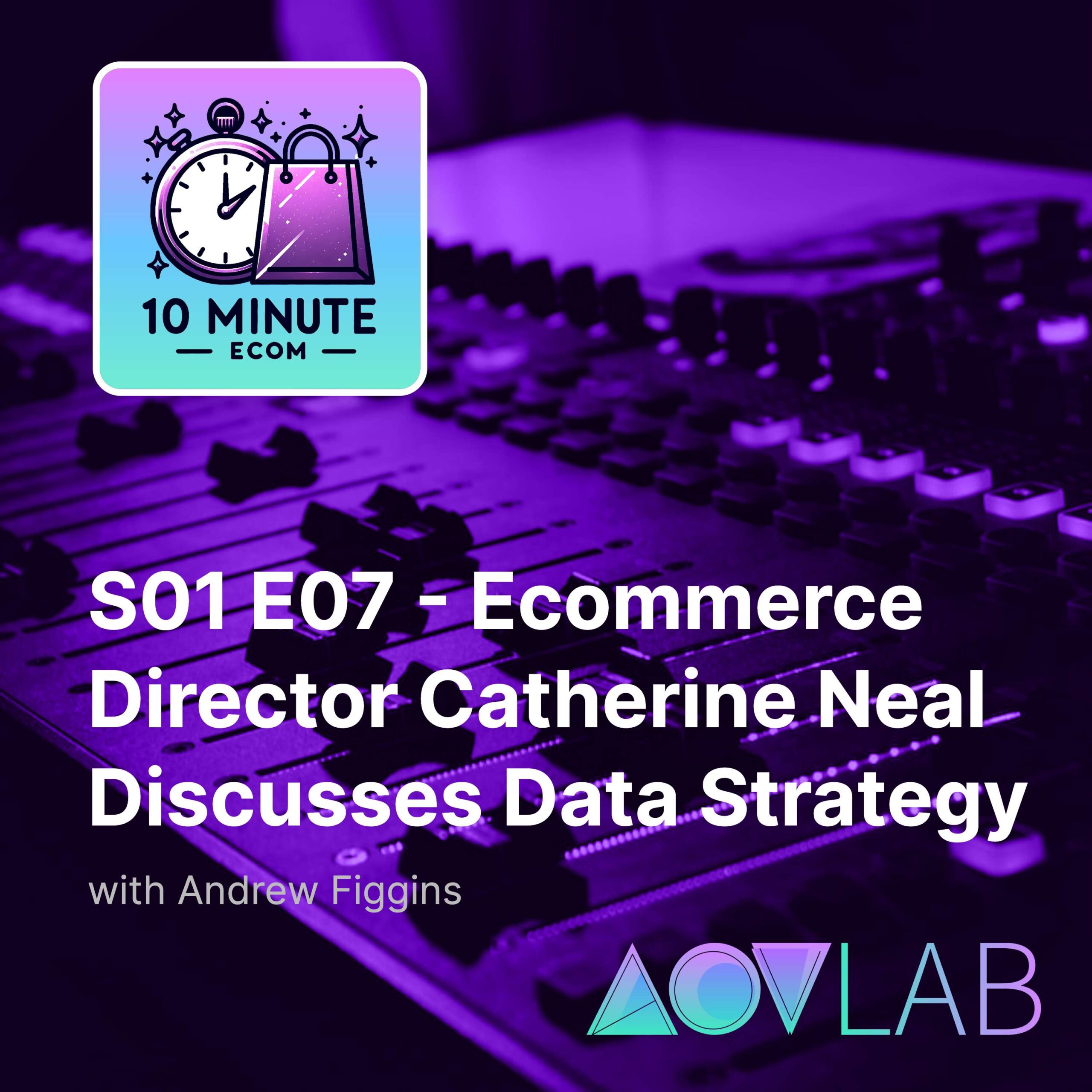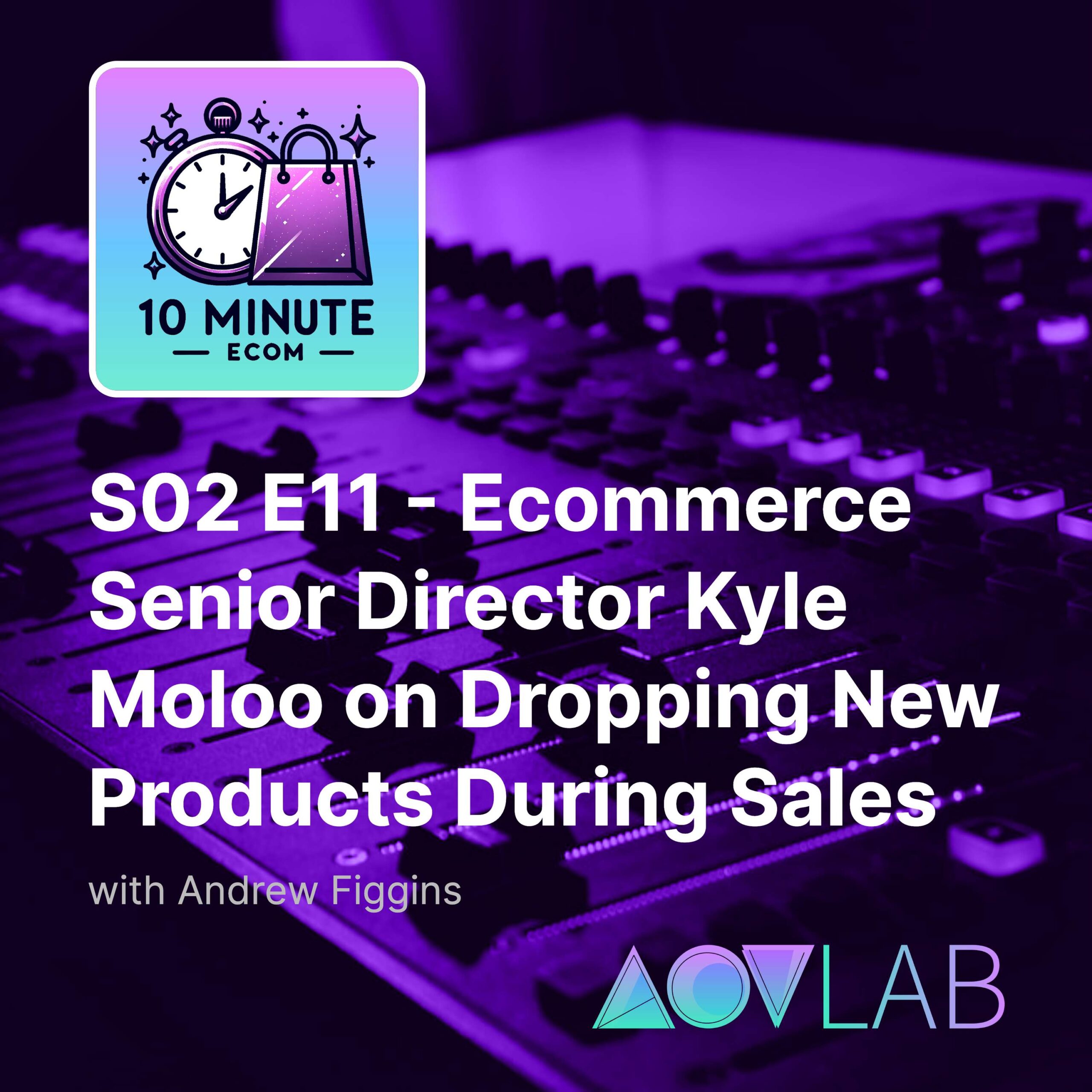View Full Transcript
Episode Transcript
[00:00:07] Speaker A: Hello, ecommerce fans, and welcome to ten minute Ecom, an AOV Lab podcast. Every episode, we break down a new and different tactic that can help you improve your ecommerce KPIs key performance indicators. I'm your host, Andrew Figgins, and like most of you, I am an ecommerce professional. You may know me as the founder of AOV Lab, the former vp of product innovation at Scrubs and beyond, or as the former director of e commerce technology at Rural King. Today I'm excited to be talking to Rita Sahir, an ecommerce colleague that is doing very interesting work in e commerce. Anyway, Rita, what did you come on the show to share today with your e commerce colleagues?
[00:00:45] Speaker B: Hi, I'm Rita Zaheer. I'm out in Los Angeles and I work on growth marketing for two different brands, namely highlight, ritual, and David Gallon.
The main tactic that I love to talk about all the time is know thy customers. It's a three part know the customer, recognizing the customer, and then really connecting with the customer.
[00:01:07] Speaker A: Thank you, Rita. After the ad, we'll get right into the chat.
Today's episode of ten minute Ecom is brought to you by shop AoV Lab. It is a brand new store with fun apparel and gear specifically for Ecom professionals just like you and me. We've got high quality embroidered and printed t shirts, hoodies, and hats that will spice up any Zoom call or in person meeting with your team. If you lead a team, these products make for awesome gifts to celebrate hitting a conversion rate or average order value milestone. If you work in ecommerce, I think you'll not only find some humor in these products, but also a sense of pride for what you do every day. Again, the site is shop Aov lablab.com. Head over right now and browse while you listen. Unless you're driving. In that case, pull over. You've got to see and share these products one last time. The website is shop aov lablab.com.
And now back to the show.
Awesome, Rita. And I'm so excited that you're here today on ten minute ecom. It's a pleasure to have you here. Tell me a little bit more about this tactic. I think I've heard in my ecommerce career how important it is to know the customer. But what's that really about? Where's that kind of start?
[00:02:27] Speaker B: Yeah, so I love to break it down into those three pieces, and the knowing sounds simpler than it really is. And a lot of people think they know the customer and they build even some format of customer segmentation that's built on maybe intuition or early stage customers, right? But what I mean is building meaningful and data driven and actionable customer segmentation.
Leveraging zero party data, which could be quizzes, surveys, conversations, the reviews that your customers are giving you, along with first party data, which is all the stuff that you get when they make a purchase. And then, if you can, getting to the point where you're also layering on some third party data, working with partners to do that, to truly be able to get to the place where you're building models that are meaningful and actionable, and creating those customer profiles and continuously refining them as you get more information and understand your customer will help you get into that point where you're building archetypes and you can target your customers better and get to the point where you're building predictive models and weighted cpas based on LTV and things like that. The next part of that is, okay, we know all this stuff about our customers. We built these amazing, beautiful customer profiles to identify the customers. Right? So a lot of the traffic we're seeing now, more and more as cookies dissipate, is, like, really hard for us to, as a company, as brands, to be able to identify who that customer is when they come to us. So really working with, there's a ton of really cool partners out there that are in this space and trying to say, we're going to help you id customers. We're going to tie their sessions together and their past buying behavior, and then layer in your modeling behavior so you can build better recommendations and really know what this customer wants. And I think a lot of that starts very small and people are trying to do it too big, and so they're, like, missing the early stage. Great stuff you should do. So one thing is making sure that the cart is connected across all their devices and all their sessions. And if you send them an email that says you left something in your cart, and they open it on their phone, even though they were shopping on their laptop, to say, okay, based on the email, you're refilling the cart, right? And not, they're showing up and there's nothing. So those are the simple things. And then the retention coms and wonderkins and black crow of the world are really building a lot of id resolution software and technology that's helping say, okay, we know who this person is. They've been here. They haven't been here. Here's where they are in the funnel. Here's what their behavior is predict. Right? So all that cool stuff really getting into it and saying, we know who you are, and let's speak to you as though you are someone that's connected with us as opposed to just any customer that's come to the site. And also loyalty programs, content programs where you ask people to log in to read new articles and all of that kind of stuff are a bunch of different things that you can use to really id and know who the customer is when they come to you.
And I think the last piece that's really important now and everyone's always talking about is speaking to the customer, connecting with them on a level that says, I know who you are, personalizing their experience as much as possible, and unifying the messaging that they're getting from all the different stages and all the different channels that they're coming to you from. That's one piece, but acknowledgment of their preferences. Right. If they've told you they only shop for their kids on your site to stop serving them messaging for products that are not geared to their child's size or age, if they've already bought a product, to not be shipping them that at the top of their search results or whatever it is, right. So trying to get to that, but also doing things like a lot of people do, a give back piece, so understanding what charities are important, right. And then contouring messaging there. So I think the connecting piece is the most important and the part that a lot of people skip because they haven't built in the information they're collecting back into their strategies. Right. And they don't have customer profiles on whatever their ESP is to really understand who the customer is and what they want next. I think that's one piece of it, but the other piece is, again, integrating all of that technology so you don't just have a bunch of technology on your site, but that you're using it to deliver the best experience. You're developing products that are what your customers have said they're interested in and are getting the most value out of. You're building even content. Right. You get to a point where you really understand what is interesting to your customer and is keeping them connected, and then you go deeper into that type of content. So that's the piece about really connecting with the customer.
[00:07:39] Speaker A: Awesome. Rita, I wanted to ask you, when it comes to the data modeling piece and really the data management, getting all that zero party data, first party data, as you mentioned, maybe even some third party data that can maybe fill in some gaps there, do you have a preferred system or tech that you like to use for that kind of thing.
[00:07:59] Speaker B: Yeah. So throughout my career I've worked with really big public billion dollar companies and really early stage startups, and I think that's where you have to really start about thinking about what kind of technology, right? So the startups, I hear some of them talking about getting a DMP and building it out, they don't have the internal resources to do that. And I think there's some amazing dmps out there. But if you're smaller, you probably have an email service provider. And a lot of the shopify clients that I work with are on Clavius, and that's a great example. Their customer profiles, they have the most custom fields and all of these things like you're collecting quiz data, right? People are having all this fun doing quizzes on your site, but they're also giving you this super valuable information that you're not integrating into the customer profile. And it would be super easy to do that with most esps I've seen. Right. So I think that's a good place to start if you're not the big guys that are building out these really massive dmps. So I think that's one piece. The other piece that you talked about a little bit is the third party data I talked about too. And there are a ton of partners out there. And again, it depends on your size. A lot of the mid size hypergrowth startups, they're not going to be able to afford to buy a lot of the credit card data, for example, that's out there, but you can work with partners who are buying it and then integrate it into their technology.
I work with a partner that I love. They're called Genius AI, and they do buy all of that data. They download all of your customer data. It could be five years worth, right? And they layer on third party data to build really predictive model. So now you're really not just getting kind of a simple archetype, but predict it. Understanding when someone makes their next purchase and what that purchase is likely to be based on their first purchase, plus based on how often they have coffee out, like all these interesting things that you wouldn't be able to get, but they're able to layer on. And I know that there's a couple of people in there, but those guys are one of my favorites and they're doing that. And now everyone's struggling with building lookalike seeds, which used to be easy on the paid social platform. Meta in particular used to put money in and you could print money because the targeting was so easy and now it's a lot harder. So one of the things that we did with this partner was start to create these lookalike seeds using third party data and more predictive kind of analytics.
And we started uploading these seeds into meta and we saw even our Google Analytics. Right, last click, attribution conversion rates increase by 50% at one of the last brands that I was working with. Really truly, because the targets, again, you know, your customer in a lot more specific way, and your high value customers, not just the ones that are more likely to predict, but the more likely to make a second purchase in 90 days, whatever the KPI is that you're working towards, those LTV metrics, incorporating that into acquisition marketing. So that was super helpful for us is to incorporate all the data that we were collecting on top of those third party metrics.
[00:11:29] Speaker A: That makes total sense. And it sounds like it's almost a way, once you get there to this promised land, of having all the data, being able to leverage it, of really being able to almost supercharge your loyalty program because you've got, as you said, a way to know the customer, to identify the customer and then really be there where and when the customer is ready to buy, which is pretty cool.
[00:11:52] Speaker B: And I think a lot of people. You're right. Don't talk about the loyalty piece of it. You're right. The lifecycle. If you really know what segment, what customer segment this person is in, you know, what they prefer, what they like, how they buy, when they buy, and what type of messaging they like. Right. What they have responded to in the past. And there's platforms. I've used many different companies. I've used Wonderkin. Right. And they do a lot of id resolution stuff. But one of the awesome things that they do is that they recognize what time of day and day of week this person came to your site and last interacted with the product. So if you're going to do a back in stock sms or email, it's going to be sent out at the exact time of day and day of week. Right. If that's meaningful, that they were last on your site, so you're not trying to break their behavior and get them to shop at times that they don't normally shop online. So those kinds of things, of knowing the customer is, knowing what their preference is and then working towards those.
[00:13:00] Speaker A: Excellent. And Rita, this is ten minute ecom. We don't have a whole lot of time here, but I did want to ask you, before we head off today, is there anything else you'd like to share just with your ecommerce colleagues and our peers that are listening today?
[00:13:13] Speaker B: Yeah. I always say I love ecommerce because it's always changing. It's so exciting. It's moving so quickly. That's the good thing about it, and that's the bad thing about it. So if you're not moving really quickly and learning all the time, you're just not going to get there. And I know January is really the start of a lot of the season of networking events and conferences. And those are things I love because that's where you're learning, that's where you're having the conversations. That's where you're even building the relationships with all the vendors you're working with now to say, what else can you do? What are you working on that I could beta test? So I always encourage people that are in ecommerce to Deville, participate and build community and network and be a part of that.
[00:13:59] Speaker A: Absolutely. Thanks so much for coming on. I think normally we expect one tactic. Rita, I think you brought ten tactics for us today. I really appreciate your time. Thanks so much.
[00:14:09] Speaker B: Thank you. Okay, take care.
[00:14:11] Speaker A: Well, we have hit that ten minute mark, so that's a wrap for today's episode. I want to again thank our guest, Rita Zahir. If you have a moment, be sure to subscribe like, or follow the show on Apple Podcasts, Spotify, Amazon Music, Google Podcasts, or wherever it is that you listen. As mentioned earlier in the episode, please head on over to shop aov lablab.com, our brand new store that helps to support this podcast. It is launching with nearly 100 products, so plenty to choose from. Our top seller so far is a shirt that simply says Ecom on it. I wear it around my extended family so I can point to it when my relatives ask me what I do.
I hope you enjoyed this episode of the show. Until next time, this is Andrew Figgins signing off and saying, have a good one.






